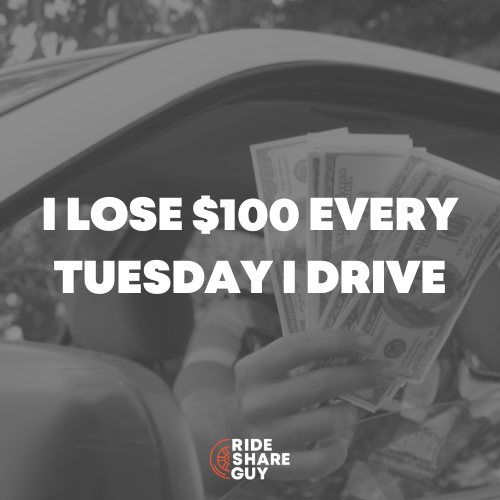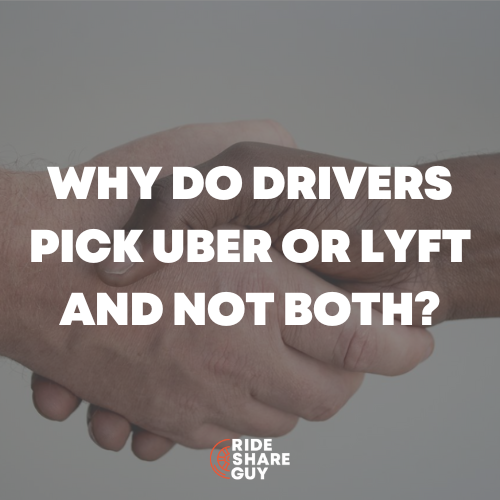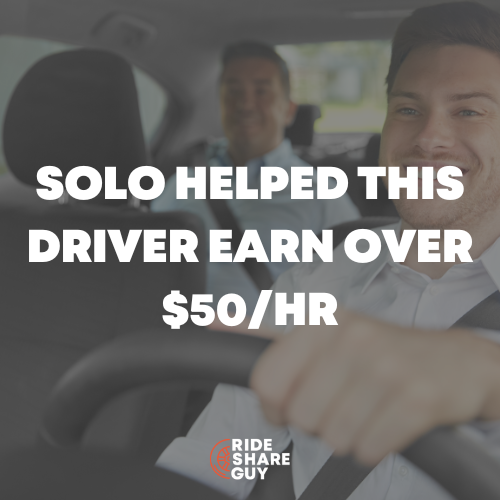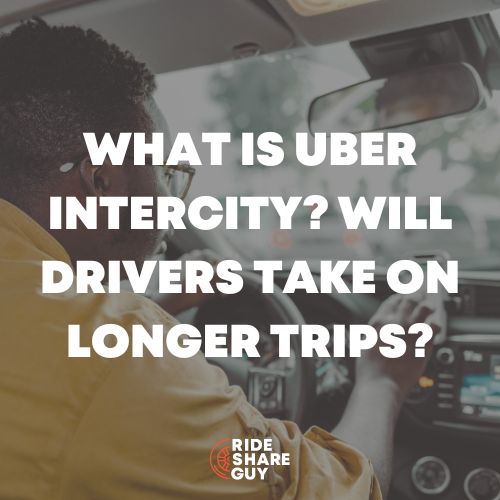In many major cities, traffic congestion is a serious problem. In addition to being frustrating, traffic congestion adds to poor air quality and increases health risks. But are Uber and Lyft truly to blame for additional traffic in urban areas? Senior RSG contributor Jay Cradeur investigates Uber and Lyft’s impact on traffic congestion and what can be done about it.
For a long time, people assumed that Uber and Lyft were the primary cause of increased traffic congestion in major metropolitan cities. As I drive for Uber and Lyft in San Francisco, it seems that over half the cars have Uber and Lyft decals on the windshield and back window. This is my perception, not reality.
Likewise, purely from an observational point of view, it appears that traffic is getting worse. I used to be able to drive on Saturday morning until noon before traffic “got bad.” Now three years later, I observe that traffic gets bad at 10 a.m. on Saturday. This article will look at some hard statistics on traffic congestion in the United States and posit why Uber and Lyft will continue to grow.
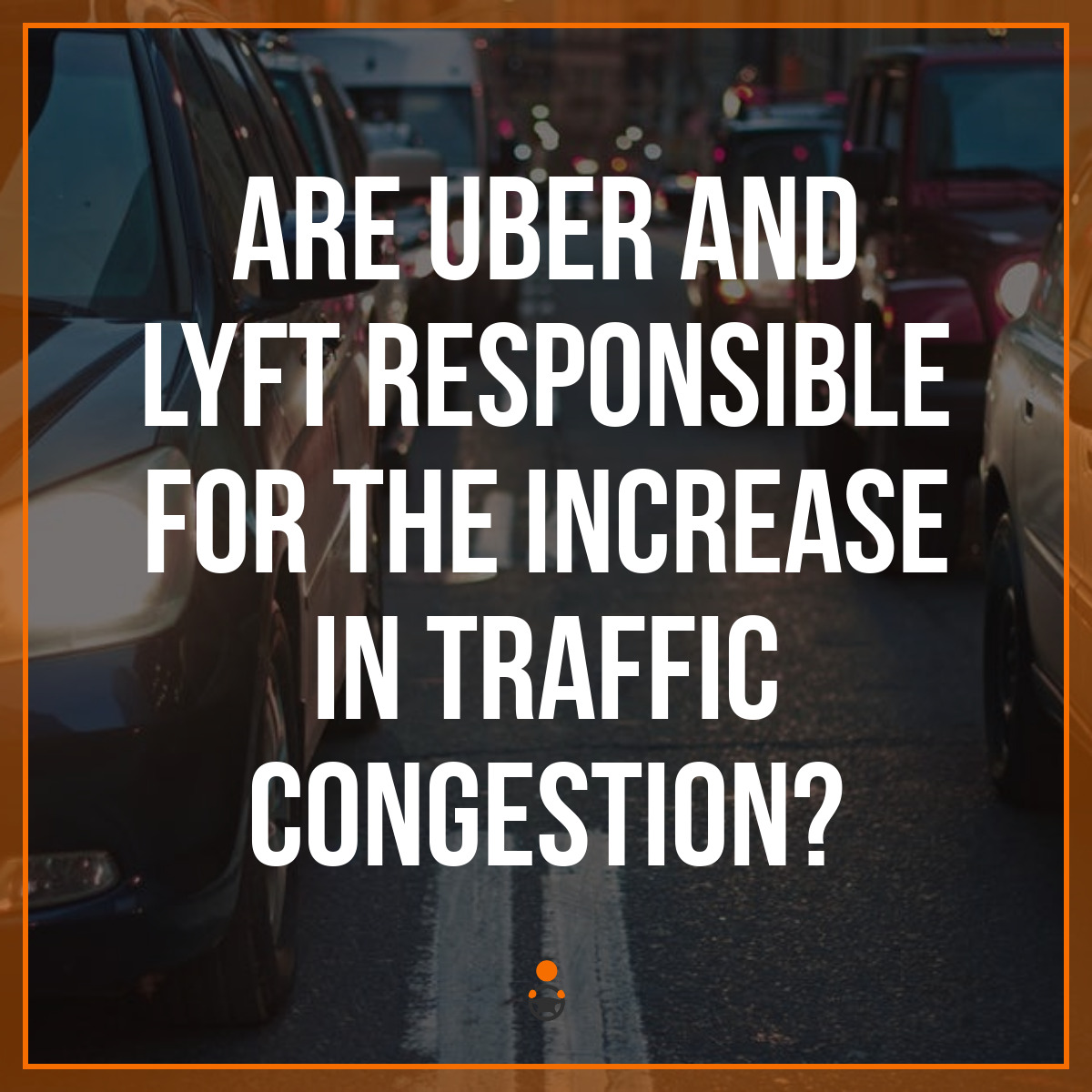
Uber and Lyft Usage Is Increasing As A Percentage of the Total Traffic
Studies show that Uber and Lyft are increasing their percentage of traffic congestion in major US cities such as San Francisco, Boston, and Chicago. This data was presented in an article by City Lab.
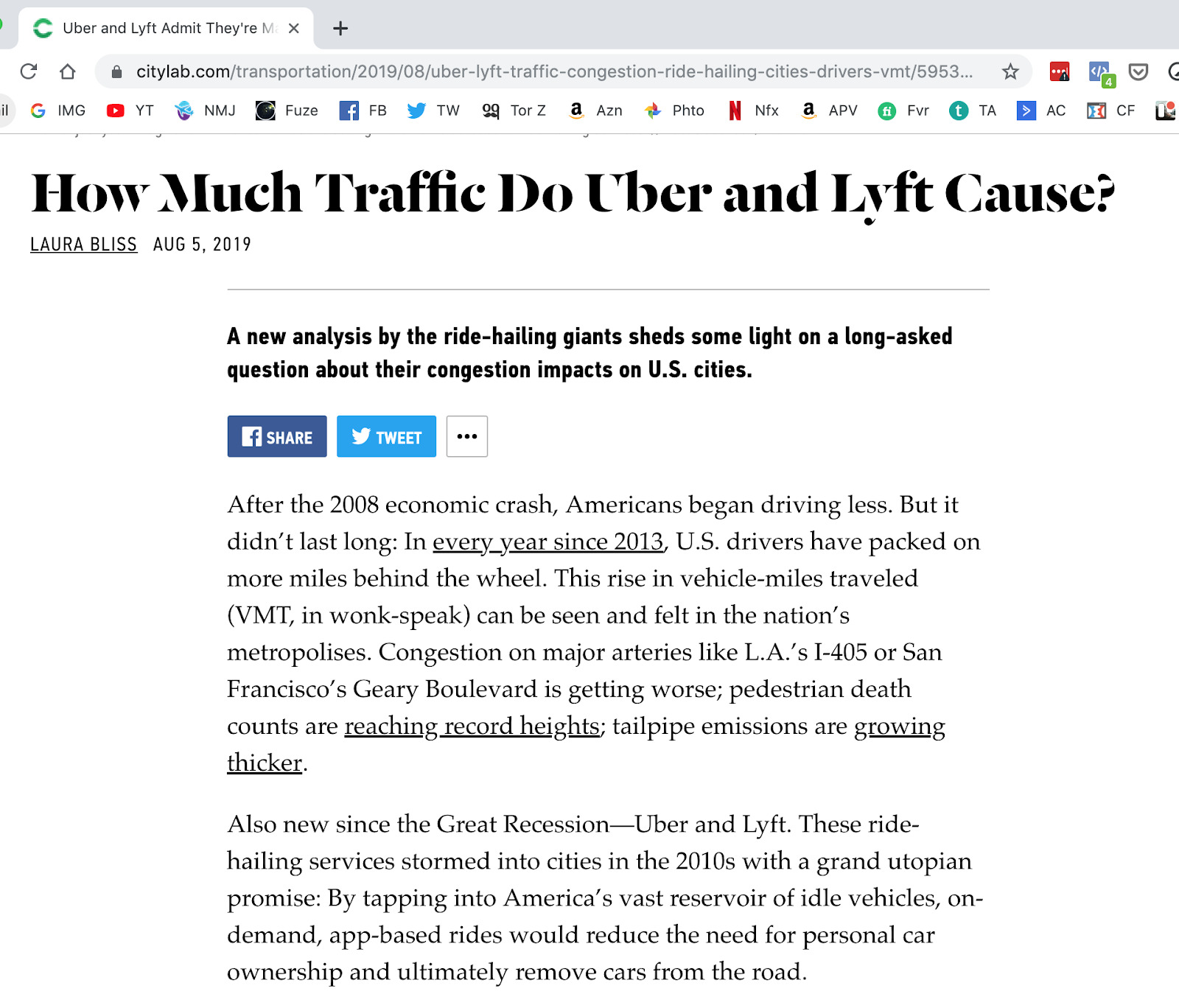
This article provides long sought after data regarding the role that Uber and Lyft play in increasing traffic in major metropolitan cities. Up to this point, Uber and Lyft have been able to deny any significant impact on traffic due to a lack of data.
Instead, the companies expressed a theory that rideshare was replacing individuals driving while, at the same time, also encouraging carpools (UberPool and Lyft Shared Rides), all of which would help to reduce traffic. I have read this article several times, and it does not answer the question of how much does total traffic increase over time. Instead, it presents percentages. Take a look:
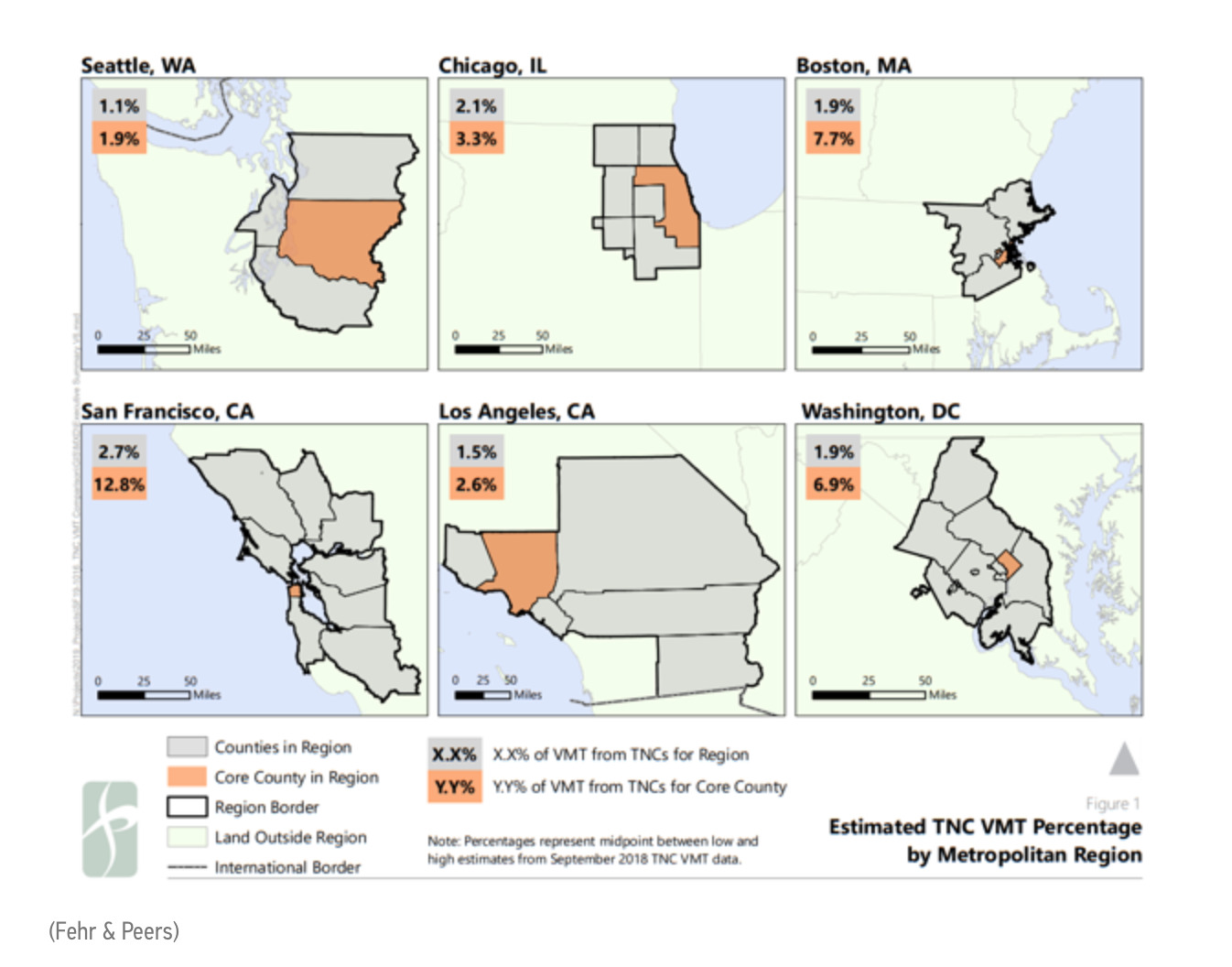
Let’s look at Seattle. 1.9% of all traffic in Seattle is due to Uber and Lyft. For the areas outside of Seattle, we see the TNC companies account for just 1.1%. That is on the low end. Contrast that to San Francisco, and we see 12.8% in the actual city and only 2.7% for all the counties surrounding the city of San Francisco.
Stay up to date on all the latest rideshare news by signing up for our newsletter below.
Rideshare Driving Is Still A Very Small Percentage Of The Total
I am struck by how low these numbers are relative to personal and commercial vehicles. In Chicago, for example, 96.7% of all traffic is due to individual drivers in their cars and commercial drivers in trucks. While the data shows that TNC vehicles are increasing in percentage of the total, what we don’t see is the impact on the total traffic. We also don’t know from where those TNC passengers are coming. Are those passengers people who use to drive to work? Are those passengers people who used to take a bus to work? Are those passengers new to the workforce and never owned a vehicle, and are now using Lyft and Uber to get to work? These are questions still unanswered.
The Rideshare Percentage Will Continue to Grow
Uber and Lyft usage will continue to increase. I can say that without any data to support my statement because I am a driver, and I see how people are using the service. As more people become comfortable with the technology, growth is inevitable. The convenience is undeniable.
Recently I was talking to someone about my three years living in Chicago in the early 1980s. I lamented about the cold winters and waiting outside in sub-zero temperatures for a bus. I specifically remember a bus coming by, hitting a pothole, and spewing icy slush all over me and my insufficiently insulated trench coat. Splash!
My passenger told me that now, with Uber and Lyft, those types of experiences are a thing of the past. Instead, call an Uber and wait inside until the car arrives. No more waiting in the freezing weather. No more ice baths. This is just one of many examples of how Uber and Lyft are changing transportation and why usage will continue to grow.
Why Are Uber and Lyft So Popular?
As a driver, I feel I have a pretty good handle on why Uber and Lyft are popular. However, I came upon an article that did a study to determine the benefits of rideshare riding.
Here are the benefits, according to this article:
“For consumers looking to forgo car ownership, there are now multiple modes and multiple price points. Shorter one-person trips are better served by scooters and bikes, while Uber and Lyft handle longer multipassenger trips.
Is it a smart financial move to ditch your car? According to Shevelenko, “while ride-share may still be too expensive as a complete alternative to car ownership, when users combine ride-share, scooters/bikes, on-demand car rental, and public transit, the reasons to keep their cars, which on average sit empty 95 percent of the time, will dwindle.”
Reduced costs. More options to get around. You’re not behind the wheel, cursing at traffic. Get some work done in the car. And best of all, if you do an UberPool or Lyft Shared Ride, you are reducing your carbon footprint by taking at least one car off the road.
Ad: Ibotta is one of the best cash back apps available to download! Use this Ibotta promo code to get cash back from hundreds of stores you already shop at like Walmart and Target.
How Do We Reduce Traffic and Our Carbon Footprint?
Uber and Lyft are here, and they are not going anywhere. The tremendous bulk of traffic, even in Uber and Lyft’s biggest percentage market of San Francisco, is created by personal and commercial vehicles. Public transportation is certainly an option, but for many people, it is inconvenient, time-consuming, and often dangerous.
Contrast that to an Uber or Lyft picking you up at your door and dropping you off at your destination for just a little bit more expense, and you see why rideshare riding is going to increase in popularity across the world. Therefore, the only solution I see is that passengers commit to UberPool and Lyft Shared rides. Manage your time so you can take a few extra minutes to get to your destination.
The Uber and Lyft apps are getting better and better each day at reducing the drive time on the multi-passenger rides. More people in fewer cars is the solution.
Is The Real Culprit for Increased Traffic and Pollution… Us?
We can blame Uber and Lyft for increased congestion, but the real culprit is us, the consumer. 87% to 98% of the traffic we experience is from personal and commercial vehicles. As this article points out:
“The report calls out private vehicles as the true culprits in overall traffic congestion, accounting for 87 to 99 percent of total VMT in the analyzed regions. Indeed, across the U.S., 75 percent of Americans still drive alone to work.”
Increased traffic is a problem as our planet continues to warm up. We need better public transportation such as what I have experienced in Kuala Lumpur, Malaysia, or in Singapore, or even in Copenhagen, Denmark. These train systems are clean, on time, and safe.
However, in America, we can’t seem to get to the same result. Therefore we need to embrace carpools, and UberPool and Lyft Shared provide a solid alternative. Uber and Lyft are the results of a broken transportation system. The solution for those of us who will take advantage of it. Be safe out there.
What do you think of studies that say Uber/Lyft cause increased traffic and congestion? Do you think people will ever fully abandon personal vehicles to ride public transit or take Uber/Lyft only?
-Jay @ RSG
